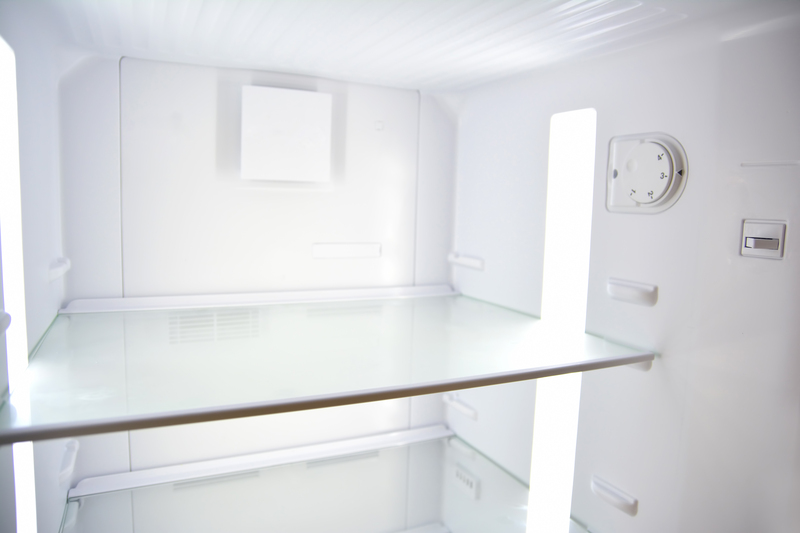How to Safeguard a Freezer for Storage Without Causing Damage
Are you planning to store your freezer for an extended period? Whether you're moving, renovating, or simply have an extra appliance to put away, knowing how to safeguard a freezer for storage without causing damage is essential. Failing to prepare your freezer correctly could result in unpleasant odors, mold, mechanical problems, or even permanent damage. Below, you'll find an in-depth guide on preparing a freezer for storage, practical storage tips, and maintenance advice to keep your appliance in top shape during its inactivity.
Why Proper Freezer Storage Matters
A freezer is a complex appliance that is sensitive to moisture, temperature fluctuations, and mechanical stress. Improper storage can lead to:
- Growth of mold and mildew
- Unpleasant odors
- Mechanical malfunction
- Corrosion of components
- Reduced lifespan
If you want your freezer to function flawlessly after a long break, it's vital to understand how to protect it during storage.

Step-By-Step Guide: How to Prepare Your Freezer for Safe Storage
1. Unplug and Empty the Freezer
Start by unplugging the appliance from the power outlet. Remove all food items and discard anything that has spoiled. Never store a freezer with food inside, even temporarily, as it attracts pests and encourages mold growth.
- Switch off and unplug the freezer at least 12 hours before cleaning.
- Dispose of expired or unwanted food items responsibly.
- Remove racks, trays, and bins to clean separately.
2. Safely Defrost the Freezer
Never skip defrosting your freezer before storage. Residual ice can melt and cause water damage during storage. Here's how to do it:
- Open the freezer door and allow it to reach room temperature.
- Place towels around the base to absorb melting ice and water.
- Leave the door open until all ice has melted.
- Wipe out any standing water thoroughly.
Tip: Avoid using sharp objects to speed up the process; this can puncture the freezer lining and cause irreversible damage.
3. Deep Clean and Disinfect
Thorough cleaning prevents odors and bacteria growth while your freezer is in storage. To safeguard your freezer during this period:
- Wipe down all interior and exterior surfaces with a mild soap or baking soda solution (1 tablespoon baking soda to 1 quart warm water).
- Use a soft sponge to clean corners, seals, and gaskets.
- Rinse with a clean, damp cloth and dry all areas completely.
- Wash racks, drawers, and accessories separately; dry before reinserting.
A spotless, dry freezer is less likely to develop musty smells or mold during storage.
4. Protect Internal Components
Fragile parts like shelves, drawers, and door bins should be removed or secured to avoid shifting and breakage during transportation. If you remove them, wrap them in protective padding and store them inside the freezer or in a labeled box.
- Wrap glass shelves and crispers in bubble wrap or towels.
- Tape loose drawers and bins to keep them in place if left inside.
- Secure the power cord with a zip tie or tape to prevent tangling.
- Protect temperature dials and displays from accidental impact.
5. Choose the Right Storage Location
Where you store your freezer affects its longevity and performance. Not all environments are suitable:
- _Indoor Areas:_ Basements, climate-controlled storage facilities, or garages with stable temperatures are ideal.
- _Avoid Outdoors:_ Never store a freezer outside unless it's specifically rated for outdoor use.
- _Humidity Control:_ Choose an area with low humidity to minimize rust and mold risk.
- _Level Surface:_ Place the freezer on a flat, sturdy surface to prevent warping or shifting.
6. Leave the Door Ajar
A crucial step in safeguarding your freezer during storage is to prevent the formation of mold and odors. Do not close the door completely. This can trap moisture inside, creating a breeding ground for bacteria.
- Insert a small object (like a rolled-up towel or door stop) to prop the door open slightly.
- Check periodically to ensure the door remains ajar.
- Some models have a storage latch or position; consult your manual.
This airflow helps your freezer remain dry and fresh throughout the storage period.
7. Cover and Protect the Freezer Exterior
To shield your freezer from dust, scratches, and moisture in storage, it's wise to cover it:
- Use a breathable cloth or furniture cover for dust and dirt protection.
- Avoid heavy plastic sheets, which can trap moisture and cause rust.
- Cover vents lightly so air can circulate, but block out debris.
8. Store Upright and Avoid Tilting
Always store your freezer in an upright position. Tilting the freezer can cause compressor oil to flow where it shouldn't, which can lead to mechanical issues.
- Only move a freezer on its side when absolutely necessary, and never store it that way.
- If the freezer has been tilted, let it rest upright for at least 24 hours before plugging it back in.
9. Prevent Pest Infestation
Even though the freezer is empty, stored appliances can attract rodents or insects looking for shelter.
- Seal small openings with tape or mesh to block entry points.
- Check the storage area for pest activity regularly.
- Avoid using strong chemical repellents that may damage seals or finishes.
Additional Tips for Long-Term Freezer Storage
- Label the Freezer: Note the storage date and when you last cleaned it.
- Inspect Throughout Storage: Periodically check for moisture, dust, or pests.
- Keep Deodorizer Inside: Consider placing an open box of baking soda or a moisture absorber inside to trap odors.
- Secure Doors: If you're storing in a public facility, lock the freezer or use zip ties for extra security.
- Consult the Manufacturer: Some brands have specific guidelines on how to preserve an idle freezer.
What to Avoid When Storing a Freezer
- Never leave a plugged-in freezer unused; it wastes energy and can be a fire hazard.
- Avoid storing in damp or unventilated places.
- Don't wrap the appliance in airtight plastic, which can cause sweat and rust.
- Never use harsh chemicals for cleaning, as they can degrade interior plastics and gaskets.
How to Reactivate Your Freezer After Storage
- Inspect Carefully: Check the interior and exterior for signs of mold, moisture, or pests before plugging in.
- Clean Again: If needed, wipe surfaces with a baking soda solution and dry thoroughly.
- Wait Before Plugging In: If transported laying on its side, allow 24 hours upright for the compressor oil to settle.
- Test the Freezer: Plug it in and observe for unusual sounds, leaks, or operational issues.
- Monitor Freezing: Once cold, restock with food gradually.
Frequently Asked Questions About Storing Freezers Safely
Can Freezers Be Stored Outside?
No. Exposing a freezer to outdoor elements, including rain, direct sunlight, and fluctuating temperatures, can cause rust, electrical faults, and damage components. Store your freezer in a dry, sheltered, and temperature-stable environment.
How Long Can You Store a Freezer?
When properly prepared, you can safely store a freezer for months or even years. However, always inspect and air out the freezer every few months to prevent odor and pest problems.
Should I Use a Moisture Absorber?
Yes, placing silica gel packets or an open box of baking soda inside helps keep the interior dry and odor-free during storage.
Is It Necessary to Remove the Door?
If required by your storage facility or local regulations (to prevent child entrapment), consider removing the freezer door or securing it in an open position.
Can I Store a Chest Freezer the Same Way as an Upright Freezer?
Yes. The preparation steps are nearly identical. However, ensure chest freezers' lids are also propped open for ventilation.

Key Takeaways: How to Safeguard a Freezer for Storage Without Causing Damage
- Thoroughly clean and dry the appliance.
- Defrost completely before storing.
- Store in a dry, indoor location with stable temperatures.
- Leave the door slightly open for ventilation.
- Cover with a breathable material to protect from dust.
- Inspect and air out the freezer periodically during storage.
- Allow resting time before plugging in after transport.
Conclusion: Best Practices for Storing Your Freezer Safely
Properly preparing and storing your freezer can extend its service life, preserve its efficiency, and save you costly repairs. By following this comprehensive guide on safeguarding a freezer for storage without causing damage, you'll ensure that your appliance remains in pristine condition and is ready for use whenever you need it again. Take the time to clean, dry, and ventilate your freezer, choose the right storage environment, and perform occasional checks--your efforts will pay off handsomely in the longevity and performance of your freezer.
For more home appliance care guides and storage tips, explore our other articles and keep your valuable equipment functioning safely for years to come.